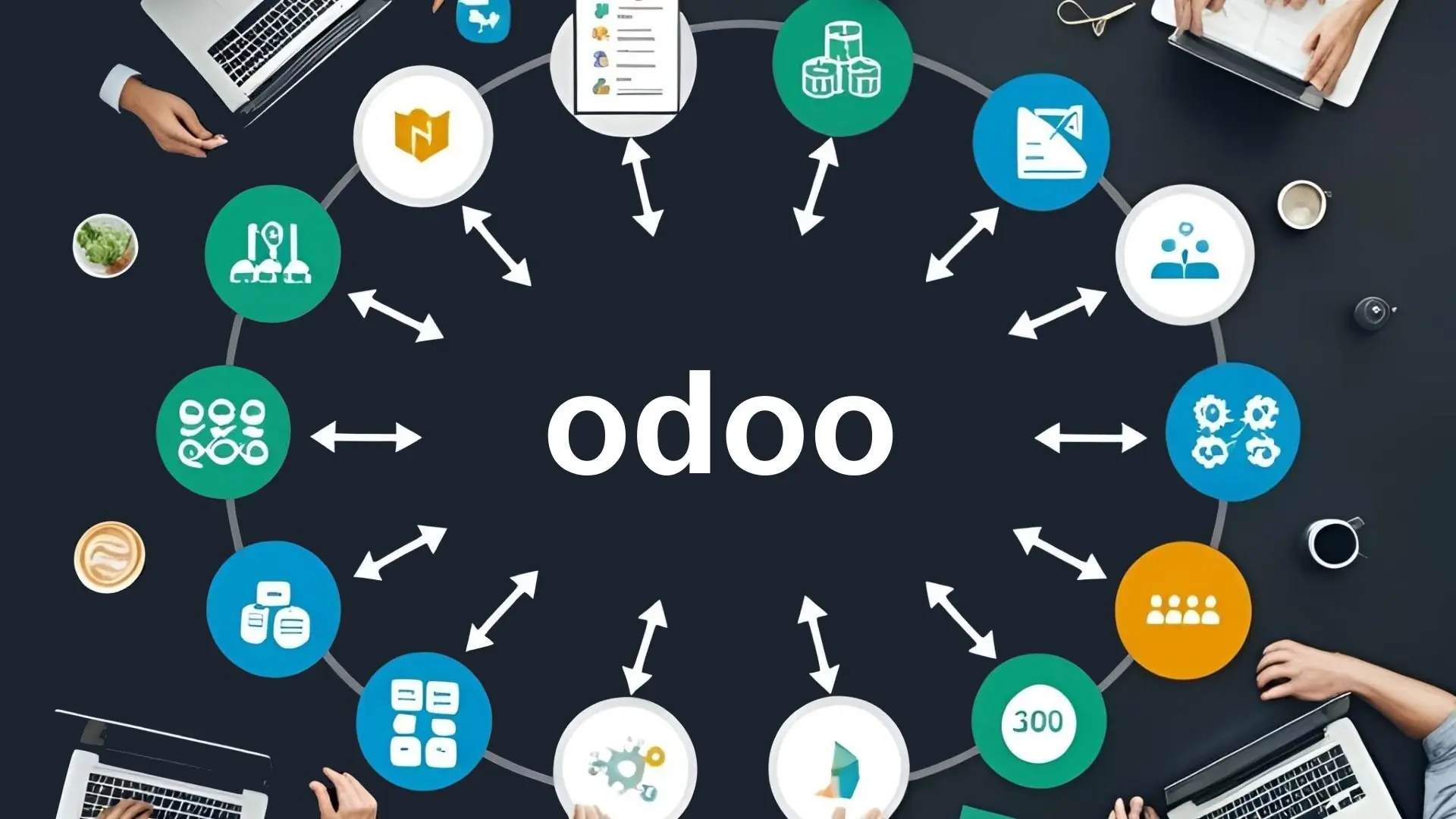Introduction aux solutions ERP Odoo et Sage
Les systèmes de planification des ressources d'entreprise (ERP) sont essentiels pour rationaliser les opérations, améliorer l'exactitude des données et soutenir la prise de décision stratégique. Dans ce contexte, odoo implementation strategies sont cruciaux pour adapter les systèmes aux exigences commerciales uniques. Odoo et Sage sont deux solutions ERP de premier plan reconnues pour leurs fonctionnalités robustes et leur adaptabilité. Cette comparaison décrit leurs caractéristiques clés, les fonctionnalités comptables de base, les options de personnalisation et d'intégration, les stratégies de tarification et l'expérience utilisateur globale pour aider les organisations à choisir le système qui répond le mieux à leurs besoins, qu'elles privilégient l'automatisation et le design modulaire ou qu'elles nécessitent évolutivité et contrôles financiers rigoureux.
Odoo est connu pour son architecture modulaire et sa version communautaire open source, qui permet aux entreprises d'adapter des solutions pour des fonctions telles que la comptabilité, les ventes, la gestion des stocks et la gestion de la relation client (CRM). En revanche, Sage a une forte réputation dans la comptabilité et la gestion financière, renforcée par des fonctionnalités modernes telles que l'intelligence artificielle et l'automatisation des processus robotiques. Les deux systèmes offrent des avantages uniques qui seront explorés en détail ci-dessous.
Features of Odoo ERP Solution

Odoo ERP offre une suite complète d'applications pour répondre à divers besoins d'affaires. Son design modulaire et open-source permet aux entreprises de sélectionner des modules spécifiques, s'adaptant aux petites et moyennes entreprises tout en restant évolutif pour les grandes entreprises. Toutes les fonctionnalités sont intégrées dans une seule plateforme couvrant la comptabilité, la gestion de projet et l'automatisation du marketing.
Fonctionnalités Comptables Clés d'Odoo
Odoo offre une comptabilité de niveau entreprise avec des fonctionnalités d'automatisation telles que les flux bancaires, les procédures de rapprochement et les rapports en temps réel. Il propose un plan comptable dynamique et des tableaux de bord financiers qui simplifient les audits et la conformité réglementaire. Des états de flux de trésorerie personnalisés et des rapports de profits/pertes permettent aux décideurs de suivre la performance avec des données cohérentes à travers tous les modules.
Options de personnalisation et flexibilité avec Odoo
Un avantage majeur d'Odoo est sa personnalisation étendue. Les utilisateurs peuvent adapter les flux de travail, créer des champs personnalisés et concevoir des rapports uniques sans développement approfondi. L'écosystème modulaire permet aux entreprises de commencer avec des applications de base et d'ajouter progressivement d'autres modules. Le développement continu dirigé par la communauté améliore les fonctionnalités et les intégrations disponibles, réduisant la courbe d'apprentissage et accélérant la mise en œuvre.
User Experience and Ease of Navigation in Odoo
Odoo emphasizes a clean, modern interface designed for easy navigation. Its drag-and-drop features and customizable dashboards allow users to tailor their workspaces, thereby reducing training time. The responsive design ensures mobile access, improving productivity and broad user adoption across departments.
Integration Capabilities of Odoo With Other Software
Engineered for seamless integration, Odoo’s open API framework connects with various external applications such as Magento, Salesforce, and marketing automation tools. Robust third-party connectors help synchronize data, allowing businesses to maintain consistency and scale operations without being tied to a single platform.
Pricing and Value for Money With Odoo
Odoo’s competitive pricing appeals to a broad range of businesses. Its free open-source community edition offers basic functionalities, while the enterprise edition provides enhanced features and support. This hybrid model means companies pay only for the modules they need, helping to reduce overall costs while maintaining high value.
Features of Sage ERP Solution

Sage ERP is known for its robust accounting and financial management capabilities, tailored for medium to large enterprises. It combines proven accounting principles with modern technology, including artificial intelligence, to support real-time financial insights and accommodate business growth.
Core Accounting Features of Sage
Sage excels in providing detailed accounting with features such as comprehensive ledger management, automated invoice processing, and cash flow management tools. Its built-in reporting tools and real-time analytics help maintain compliance and reduce errors. Sage also supports multiple currencies and complex tax structures, making it a strong choice for global operations.
Scalability and Growth Potential With Sage
Designed for scalability, Sage ERP easily supports expansion into international markets. Its architecture accommodates rising transaction volumes, inventory growth, and an expanding customer base without sacrificing performance. Cloud-based deployment and modular design allow businesses to add new features as their needs evolve.
User Interface and Accessibility in Sage
Sage features an intuitive interface that simplifies complex accounting processes. Its customizable dashboards help finance professionals focus on key metrics. Although the traditional design may require additional training, mobile-enabled capabilities ensure that critical data remains accessible on the go, ultimately boosting productivity.
Integration Options Provided by Sage
Sage offers robust integration options through its RESTful API and pre-built connectors, linking the ERP system with CRM, eCommerce, supply chain, and HR applications. These integrations promote secure and standardized data exchange, enhancing overall system performance and decision-making processes.
Pricing Strategy and Affordability of Sage
Sage’s pricing strategy targets medium to large enterprises with complex needs. Although its initial investment may be higher, the long-term benefits in efficiency, data accuracy, and regulatory compliance justify the cost. With various subscription and license options, Sage’s modular pricing allows businesses to expand functionalities over time while maintaining comprehensive support.
Comprehensive Features Comparison of Odoo and Sage

This comparison highlights the key strengths of both ERP systems. While both offer powerful financial accounting capabilities, they differ in user experience, customization, integration, and pricing.
Accounting and Financial Management Review
Odoo provides a flexible, modular approach that blends accounting with broader business functions, offering automated dashboards and customizable reports. Sage, on the other hand, emphasizes detailed financial controls with rigorous audit trails and compliance measures. The choice depends on whether a business values integration and customization (Odoo) or in-depth financial management (Sage).
User Experience Comparison
Odoo’s modern, user-friendly design ensures a quick learning curve due to its intuitive interface and drag-and-drop functionalities. Sage’s more traditional user interface, while requiring additional training, is designed for complex financial management and detailed configuration. Both systems allow dashboard customization, but their ease of use and training needs differ significantly.
Pricing Evaluations
Odoo's hybrid pricing model, which includes a free community edition, is ideal for startups and small to midsize businesses. In contrast, Sage requires a higher upfront investment but justifies its cost with advanced features and comprehensive support. The decision largely hinges on budget constraints and the specific financial management needs of the organization.
Integration Capabilities Side by Side
Odoo’s open API allows for highly flexible integrations with a variety of third-party applications, ideal for businesses requiring adaptable connections. Sage provides structured integrations with pre-built connectors for secure data exchange, which benefits enterprises that prioritize data security and standardization.
Overall Usability Assessment
Overall usability reflects a balance between Odoo’s ease of use and Sage’s detailed functionalities. Odoo’s intuitive design and community support enhance employee productivity, while Sage’s advanced support and comprehensive documentation ensure precise management of complex operations. The final decision should be based on the specific operational dynamics and user needs of the business.
Tailoring Solutions for Specific Business Needs

Selecting an ERP solution requires a clear understanding of a company’s unique operational landscape and strategic goals. Odoo’s customizable and modular design is ideally suited for industries such as retail and eCommerce where end-to-end automation can optimize supply chain and sales processes. Conversely, Sage’s robust financial management capabilities make it well-suited for industries with high regulatory and compliance demands, such as manufacturing and healthcare. Tailoring the ERP system—through pilot programs or consulting experts—ensures that it meets both current requirements and future growth objectives.
Comprehensive Features Comparison Table
Below is a table summarizing key attributes of Odoo and Sage ERP solutions:
Catégorie de fonctionnalité | Odoo ERP | Sage ERP |
|---|---|---|
Accounting Management | Modular design with real-time automated reporting | Robust, detailed financial controls and audit trails |
Customization & Flexibility | Highly customizable; extensive community modules | Standardized functions with advanced configuration |
User Experience | Modern, intuitive UI with mobile responsiveness | Traditional yet comprehensive UI requiring training |
Integration Capabilities | Open API with a wide variety of third-party integrations | Structured connectors with secure integration protocols |
Pricing Strategy | Hybrid model with free community edition and scalable pricing | Higher initial cost with enterprise-grade value |
Scalability | Suitable for SMBs scaling into larger enterprises | Designed primarily for medium-to-large enterprises |
Support & Upgrades | Community support plus enterprise support options | Dedicated support services and regular updates |
Deployment Options | Cloud and on-premise options available | Cloud and on-premise, with extensive security measures |
Before choosing an ERP system, businesses should prioritize these attributes based on their operational goals, ensuring that their investment aligns with both current and future needs.
Recap of Key Differences and Similarities
Odoo and Sage both deliver strong ERP solutions with reliable financial and integration capabilities. Odoo offers flexibility, modern user experience, and customizable modules—ideal for businesses with rapid growth. Sage stands out with detailed financial management, strict regulatory compliance, and a structured integration framework.
Aligning Software Choice With Business Goals
Ultimately, the decision between Odoo and Sage depends on a company’s operational requirements and growth trajectory. Organizations seeking an adaptable and cost-effective solution might lean toward Odoo, while those needing in-depth financial control and global accounting standards may prefer Sage. The chosen ERP system should enhance long-term efficiency, accuracy, and innovation across the enterprise.
Frequently Asked Questions
A: Odoo’s modular design and open-source community edition allow businesses to implement only the necessary modules, offering high customizability and scalability. This enables companies to tailor workflows and generate custom reports without significant additional costs.
A: Sage provides robust accounting features such as comprehensive ledgers, automated invoice processing, and detailed audit trails, ensuring efficient financial operations and adherence to regulatory compliance.
A: Yes, Odoo’s open API framework ensures seamless integration with various third-party tools including eCommerce platforms, CRM systems, and marketing automation software, which creates a unified management system across departments.
A: Odoo’s hybrid pricing model, with its free community edition, is very cost-effective for smaller businesses and startups, while Sage’s advanced features typically cater to larger organizations with more complex requirements.
A: Odoo offers a modern, intuitive interface that speeds up user adoption, whereas Sage’s traditional look requires more training but provides extensive configuration options suited for complex financial management.
A: Companies should consider budget constraints, the complexity of accounting needs, customization and integration requirements, and long-term growth plans when selecting the ERP system that best fits their objectives.
A: Effective integration enhances overall ERP performance by ensuring seamless data exchange between critical business systems. Odoo’s flexible API supports diverse integrations, while Sage emphasizes secure, standardized connectivity to maintain data accuracy and reduce manual processes.
Final Thoughts
Odoo and Sage both offer powerful ERP solutions with unique strengths. Organizations must weigh Odoo’s ease of customization and modern design against Sage’s robust financial controls and secure integrations. The right ERP choice will drive operational efficiency, support growth, and align seamlessly with overall business goals while fostering innovation and accuracy.